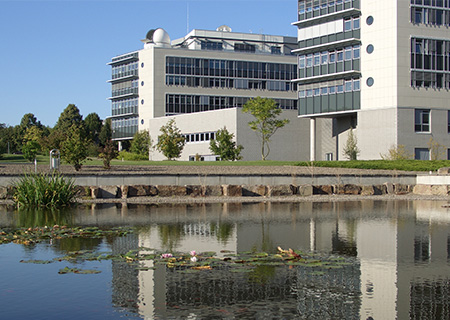
Adresse:
Institut für Astrophysik der Universität Göttingen
Friedrich Hund Platz 1
37077 Göttingen
www.uni-goettingen.de/sammlungastrophysik
Öffentliche Ausstellung: ja
Eintritt: frei
Geöffnet: nach Vereinbarung
Öffentliche Führungen: ca. einmal pro Monat
Führungen: nach Vereinbarung
Ansprechperson:
Dr. Klaus Reinsch
Tel.: +49 551 39-24037
E-Mail: reinsch@astro.physik.uni-goettingen.de
Die Sammlung geht auf eine der ältesten Einrichtungen der Göttinger Universität zurück, die 1748 gegründete Sternwarte. Sie dokumentiert zweieinhalb Jahrhunderte Wissenschaftsgeschichte sowie das Wirken herausragender Göttinger Wissenschaftler, unter anderem Tobias Mayer (1723–1762), Carl Friedrich Gauß (1777–1855) und Karl Schwarzschild (1873–1916). Sie umfasst einen umfangreichen Bestand von Gegenständen und Instrumenten aus dem 17. bis 20. Jahrhundert, die für astronomische und geodätische Messungen sowie für andere wissenschaftliche Untersuchungen an der Göttinger Universitäts-Sternwarte verwendet wurden.
Der Grundstock an astronomischen Geräten kam um 1750 aus dem Nachlass des Hannoverschen Geheimrates und Großvogtes Joachim Heinrich Freiherr von Bülow (1650–1724) an die Göttinger Universität.
Im Laufe der Zeit sind weitere Instrumente durch Schenkungen von Privatpersonen und Mitgliedern verschiedener Königsfamilien, die der Georgia Augusta verbunden waren, an die Sternwarte gelangt. Andere Instrumente wurden speziell für die Einsatzzwecke in der Sternwarte in Auftrag gegeben und von angesehenen Instrumentenbauern ihrer Zeit gefertigt. Darunter waren auch verschiedene Universitätsmechaniker aus Göttingen. Viele bis heute klangvolle Namen wie Bird, Fraunhofer, Gauß oder Herschel sind durch überkommene Instrumente vertreten. Zudem bewahrt das Institut eine Anzahl von Erinnerungsstücken an Carl Friedrich Gauß, den ersten Direktor der 1816 fertig gestellten neuen (heute historischen) Sternwarte, auf. Im Jahr 2005 ist die Sammlung mit dem Institut für Astrophysik in den gemeinsamen Neubau der Fakultät für Physik auf dem Nordcampus der Universität umgezogen. Ein Teil der Sammlung ist seitdem im Eingangsbereich sowie in der Bibliothek des Instituts für Astrophysik ausgestellt und somit in begrenztem Rahmen öffentlich zugänglich.
Klaus Reinsch




